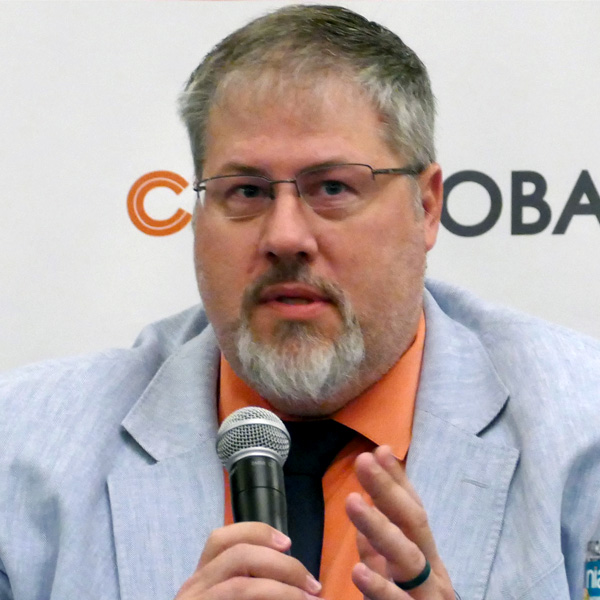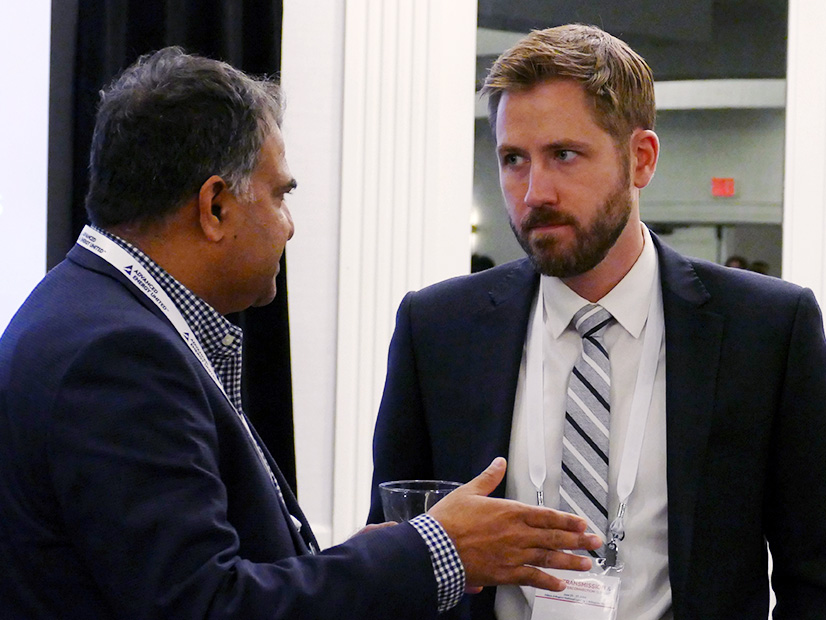Ten East Coast states signed a memorandum of understanding July 9 to set up a framework to coordinate interregional transmission planning and development.
Connecticut, Delaware, Maine, Maryland, Massachusetts, New Hampshire, New Jersey, New York, Rhode Island and Vermont will explore mutually beneficial interregional transmission to increase the flow of electricity between the ISO-NE, NYISO and PJM, as well as assessing offshore wind infrastructure needs.
The states have been working on the issues for more than a year, since they sent the U.S. Department of Energy’s Grid Deployment Office a letter asking for help to convene a Northeast States Collaborative on Interregional Transmission. (See Northeast States Detail Early Efforts on Interregional Tx Collaborative.)
Massachusetts Energy and Environmental Affairs Secretary Rebecca Tepper said her state cannot go it alone to address climate change and that interregional collaboration is a top priority of Gov. Maura Healey (D).
“Through partnerships like this collaborative, we will be able to advance more cost-effective transmission projects for the residents of the Northeast,” Tepper said in a statement.
The states agreed to work together on interregional transmission infrastructure and share information. Enhancing ties between the regions should lower prices for consumers by broadening access to the cheapest available power and bolster reliability during periods of extreme weather and system stress, they said in the MOU.
“New Jersey is not alone in experiencing increasingly frequent extreme weather events and record-breaking temperatures that threaten public health and safety,” New Jersey Gov. Phil Murphy (D) said in a statement. “We are also not alone in our response to the intensifying climate crisis, which provides crucial opportunities to leverage interregional partnerships toward improving our collective resilience and economic vitality.”
The collaborative has plans to produce a strategic action plan for promoting interregional transmission projects that can cut the cost of bringing offshore wind to consumers. That plan would involve identifying barriers to such projects and how to address them.
The states intend to provide opportunities for external engagement as they develop the plan. They also want to coordinate on technical standards for offshore wind transmission equipment to ensure interoperability as projects come online in different areas at different times. The states plan to work with DOE, FERC, industry and the three grid operators.
Any decisions that come out of the collaborative will require mutual consent among the states that said they would maintain their independence. That means nothing in the deal prevents them from independently or collectively seeking support or funding, advocating for or participating in any other planning and cost allocation processes.
The six New England states and New York have a pending application at DOE to get some funding through the Grid Innovation Program for National Grid’s Clean Resilience Link, a 345-kV line between ISO-NE and NYISO to increase their transfer capability by 1,000 MW. The $10.5 billion GIP program offers a maximum of $1 billion for projects.
Speaking for himself, Abe Silverman of SilverGreen Energy Consulting, which has been working with the states, said in an interview that the effort helps to formalize a relationship between the states, the federal government and the ISO/RTOs to move transmission forward for offshore wind and interregional transfer capacity.
While federal efforts on interregional transmission also are important, Silverman said that often, when major interregional and even intraregional lines have actually been built, states have been behind the efforts.
“There isn’t a lot of it, and what has been built … has often been the result of concerted state efforts,” he said. “Look at the Competitive Renewable Energy Zone lines in Texas, the Long-Range Transmission Planning Program in MISO, the New York [Public Policy Transmission Need process] and New Jersey’s State Agreement Approach; … those were all major transmission efforts that had their genesis in state agreements.”
The states in the collaborative include only a couple led by Republican governors, and many of the quotes from senior officials on it were focused on liberal policies around offshore wind and addressing climate change, but Silverman argued that interregional transmission has bipartisan bona fides.
“I often talk about how transmission policy needs to pass the ‘Joe Manchin press release’ test, which is, this is a set of policies that [Sen.] Joe Manchin [I-W.Va.] would be OK promoting,” Silverman said. “And you look at the benefits of interregional transmission: It’s lower cost for consumers; it’s better reliability — particularly in the face of extreme weather — and it’s about American energy independence and dominance.”
Those factors, which test well with Manchin and others leaning to the right on energy, are enough to justify the investment regardless of the climate impacts, he argued.
NARUC Weighs in on Interregional Transmission with New Study
The National Association of Regulatory Utility Commissioners on July 9 released a new study called Collaborative Enhancements to Unlock Interregional Transmission, which was prepared by Energy and Environmental Economics (E3).
The study highlights strategies for increasing transfer capability, which state regulators increasingly have looked toward because of rising demand and ongoing changes in supply.
“As our existing grid is forced to respond and adapt to emerging needs, regulators are increasingly interested in assessing how new interregional transmission infrastructure can drive value for customers,” Kansas Corporation Commission Chair Andrew French said in a statement. “This timely report provides PUCs a straightforward assessment of existing barriers preventing robust interregional transmission planning and a suite of potential solutions for regulators and other stakeholders to consider.”
Maria Robinson — director of DOE’s Grid Deployment Office, which helped NARUC with the report — called interregional planning critical for providing reliable and affordable power.
“Public utility commissions need practical solutions for identifying crucial interregional transmission projects to ensure power gets from where it’s generated to where it’s needed most, when it’s needed most,” Robinson said in a statement. “We are proud to support NARUC in this effort as partnerships at the federal, state and local levels are needed to meet our shared goal of a more reliable and affordable grid in the face of aging infrastructure, extreme weather and changing energy landscape.”
The study argues that the limited success on interregional lines so far can be attributed to three main issues: the lack of planning motivators, cost allocation, and planning process misalignment and analysis limits.
Regions could expand coordinated planning to identify joint needs and solutions because once the same needs are identified, they would be motivated to reconcile their differing regional planning processes, or develop new ones, to identify interregional lines, the paper says.
They also could standardize universal best practices in regional and interregional transmission solutions to ensure the best projects are identified and thoroughly analyzed, while accurately assigning costs to beneficiaries, to cut friction in interregional planning. The regions also should work to reconcile differences in modeling, tools, data inputs and benefit calculation methods, the paper says.
While projects are planned and cost allocated across multiple states, they are sited by individual state regulators who most often have the final decision on what moves forward. The paper suggests ensuring projects have non-energy benefits to ensure states that bear their physical impact also benefit, which could include jobs, revenue sharing, investment in capital projects and social programs, and economic development opportunities.
States also could use the same analysis for an interregional line’s “need” and coordinate their evidentiary records to synchronize permitting timelines and standardize data collected to inform decision-making, according to the study.
“Different states may still have different priorities and may choose to include different types of benefits in what they consider, but standardizing a common set of underlying facts, models and timelines could help expedite project approvals,” the paper says.






